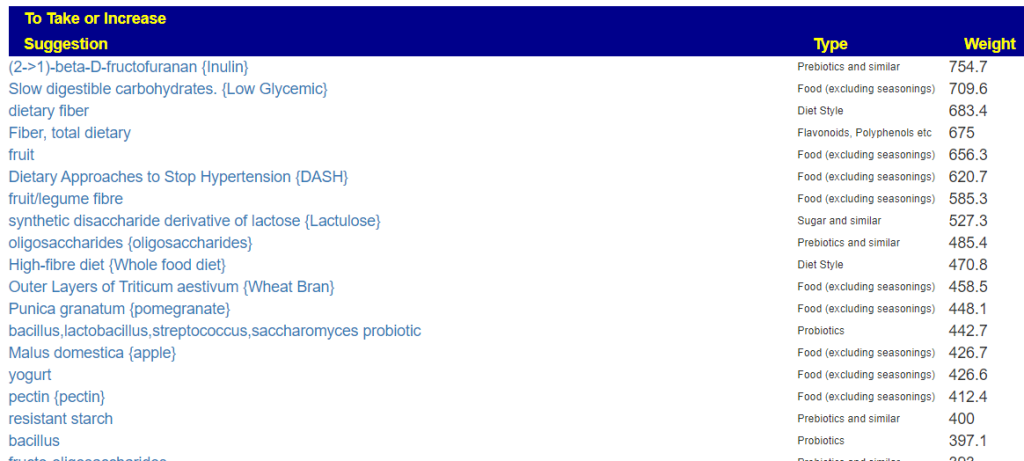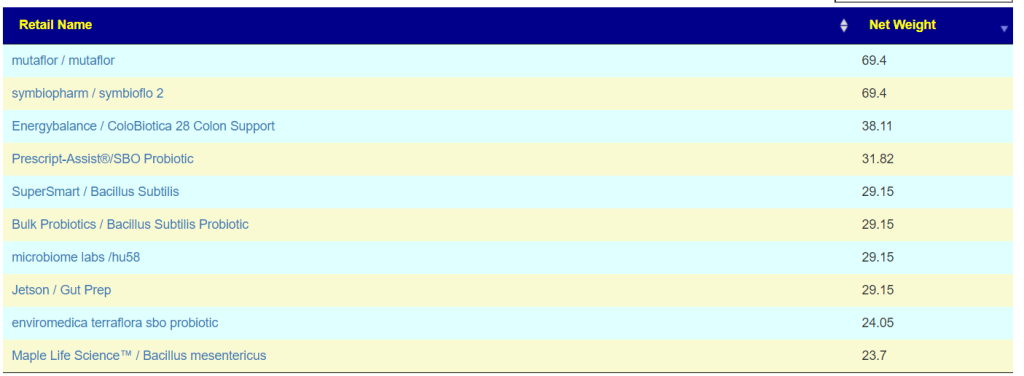Prior Posts
Dealing with ME/CFS and many microbiome dysfunction is rarely a short journey
- ME/CFS Continues Improvement + Lab Read Quality Issues [Feb 2024]
- Update on ME/CFS Person [Sep 2023]
- Follow up Microbiome Analysis from a prior post [Apr 2022]
- Rosacea, Circulation and mild CFS [Dec 2021]
Recent Story
Some supplements that I have been taking since the last test:
- Tetracycline
- Clove
- Holy basil (Neem)
- Augmentin + Bromelain
- Grapefruit seed extract
- Monolaurin
- Apple peel powder
- Thyme
My symptoms:
- Still get the red nose (some form of rosacea).
- Still feel fatigued (both physically and mentally). But it is better than before.
- Feeling stressed. But it is better than before.
- Brain fog.
- Bloated.
- Lots of gas – I fart and burps a lot.
- Issues with allergies (itching eyes, stuffed nose and itchy skin)
Video
Analysis
We will start with the high-level comparison. Note that some numbers will change with time. There are no major changes. Since the latest sample reports 20% more bacteria, many counts are expected to be 20% higher – for example: Thorne Ranges: old: 230 + 20% = 276, with the seen count being 253 (so an apparent improvement although the number went up)
| Criteria | 9/2/2024 | 1/22/2024 | 9/12/2023 | 2/22/2023 | 8/11/2022 | 3/25/2022 | 12/3/2021 | 8/31/2021 |
| Lab Read Quality | 9.1 | 7.9 | 3.5 | 9.7 | 5.5 | 6.2 | 3.6 | 7.8 |
| Outside Range from GanzImmun Diagostics | 16 | 16 | 16 | 15 | 15 | 17 | 17 | 20 |
| Outside Range from Lab Teletest | 23 | 20 | 20 | 24 | 24 | 22 | 22 | 25 |
| Outside Range from Medivere | 14 | 16 | 16 | 15 | 15 | 15 | 15 | 19 |
| Outside Range from Metagenomics | 6 | 7 | 7 | 9 | 9 | 7 | 7 | 8 |
| Outside Range from Microba Co-Biome | 3 | 2 | 2 | 7 | 7 | 1 | 1 | 1 |
| Outside Range from MyBioma | 6 | 5 | 5 | 7 | 7 | 7 | 7 | 8 |
| Outside Range from Nirvana/CosmosId | 21 | 20 | 20 | 23 | 23 | 18 | 18 | 21 |
| Outside Range from Thorne (20/80%ile) | 253 | 230 | 198 | 223 | 223 | 217 | 217 | 246 |
| Outside Range from XenoGene | 32 | 32 | 24 | 32 | 32 | 36 | 36 | 39 |
| Outside Lab Range (+/- 1.96SD) | 12 | 5 | 15 | 10 | 11 | 9 | 9 | 14 |
| Outside Box-Plot-Whiskers | 48 | 52 | 56 | 42 | 36 | 42 | 59 | 42 |
| Outside Kaltoft-Møldrup | 113 | 123 | 70 | 139 | 56 | 78 | 59 | 140 |
| Bacteria Reported By Lab | 600 | 508 | 399 | 666 | 478 | 613 | 456 | 572 |
| Bacteria Over 85%ile | 48 | 52 | ||||||
| Bacteria Under 15%ile | 118 | 157 | ||||||
| Pathogens | 23 | 26 | 25 | 30 | 23 | 39 | 24 | 30 |
| Condition Est. Over 85%ile | 2 | 5 |
There is a new comparison table added that compares sets of symptoms bacteria for symptoms reported in either sample. This is a thought experiment on a different way of evaluating the microbiome, i.e. are symptom bacteria reducing. Remembering that we have 20% more bacteria reported, the improvement may be slightly under-reported.

Going Forward
My current preference is to use symptom associations suggestions with KEGG suggested suggestions. This assumes that the person has added their symptoms.
Using Entered symptoms
Since this person has access to antibiotics, I opted to include all classes of modifiers. We have 38 bacteria selected — a reasonable number
The suggests were a nice mixture for ME/CFS. Typically, I see the top being just antibiotics, in this case we have several probiotics there.

And suggested retail probiotics are:

Using Diagnosis and PubMed
Using a diagnosis provides less precise filtering compounded by different labs (with different identification of bacteria). If the person is using a lab that lacks a large number of annotated samples from that lab, then it is the best path.
The suggested path is to go down the list and pick the ones that has the highest value(s) that agrees with one or more of the diagnoses that you have.

In this case we have only 4 bacteria in the selection, so the suggestions will be likely more generic than specific.

There are no antibiotics in this list

The probiotic list is below. It has some similarities to the above list.

Using KEGG Derived Probiotics
This is an experimental approach that attempts to do a metagnòmia approach from the available data. We estimate which compounds are too high or too low. Then we match them to probiotics which produce or consumes them. Postbiotics can be used for items that are too low. There is no filtering of any type; we look at the entire microbiome.
The results are different — as to be expected. Why expected? The prior ways depended on studies being done what each probiotics bacterium does. Often there are no studies. This way uses the DNA/RNA sequences of everything and thus we do not need studies.

I usually focus on too low, with the assumption that a surplus will just be ignored or has less impact (i.e. starvation versus obesity) We can see where there is agreement between the lists.
- aor / probiotic-3 is [30]
- bioflorin (deu) / bioflorin is [25]
- miyarisan (jp) / miyarisan is [22]
- Microbiome Labs / MEGA Genesis is [27]
- Bulk Probiotics / L. Reuteri Probiotic Powder is [27]
Consensus View?
You can build consensus views, a.k.a. Monte Carlo model, but IMHO that is likely done by those that want to “over work the problem”.

Summary of Suggestions
Remember these are suggestions, and NOT a protocol. What you actually do should be reviewed by a knowledgeable medical professional before starting.
My own proposal for discussion would be:
- Probiotics: Changing every 1-2 weeks. Starting at a low dosage and working up
- Mutaflor (E.Coli Probiotic)
- aor / probiotic-3
- L. Reuteri
- Antibiotics: 1 week/month at most
- Food etc
- alpha-linolenic acid {Omega-3} or lots of fish!
- {Chicory}
- {Whey}
- {gum arabic}
- {A2 Milk}
- {arginine}
- {glutamate}
- soy
This can be made more complex by using consensus / Monte Carlo Model
Reader Plan
Microbiome Prescription produces suggestions, the weights/priorities are the odds of causing a change and not the amount of change (there is simply no objective data to compute the amount). This reader did their own evaluation of what they felt comfortable with (excellent idea).
I have also bought 2 more tests so I will do them with max 3 months apart as you said in the video.
I came up with this protocol by using the “Beginner-Symptoms: Select bacteria connected with symptoms”:
- Week 1-2: Gum arabic
- Week 3-4: Monolarin (lauric acid)
- Week 5-6: Psyllium
- Week 7-8: Rosemary
- Week 9-10: Parsley
- Week 11-12: SymbioFlor-2
I found that I get best results from herbs, prebiotics and antibiotics. The only probiotic I’ve got good results from is Symbioflor 2 (an E.Coli probiotic) [Editor: E.Coli probiotics also worked best for me]
A lot of probiotics that I’ve tested I’ve got bad results from.
Postscript and Reminder
As a statistician with relevant degrees and professional memberships, I present data and statistical models for evaluation by medical professionals. I am not a licensed medical practitioner and must adhere to strict laws regarding the appearance of practicing medicine. My work focuses on academic models and scientific language, particularly statistics. I cannot provide direct medical advice or tell individuals what to take or avoid.My analyses aim to inform about items that statistically show better odds of improving the microbiome. All suggestions should be reviewed by a qualified medical professional before implementation. The information provided describes my logic and thinking and is not intended as personal medical advice. Always consult with your knowledgeable healthcare provider.
Implementation Strategies
- Rotate bacteria inhibitors (antibiotics, herbs, probiotics) every 1-2 weeks
- Some herbs/spices are compatible with probiotics (e.g., Wormwood with Bifidobacteria)
- Verify dosages against reliable sources or research studies, not commercial product labels. This Dosages page may help.
- There are 3 suppliers of probiotics that I prefer: Custom Probiotics , Maple Life Science™, Bulk Probiotics: see Probiotics post for why
- My preferred provider for herbs etc is Maple Life Science™ – they are all organic, fresh, without fillers, and very reasonably priced.
Professional Medical Review Recommended
Individual health conditions may make some suggestions inappropriate. Mind Mood Microbes outlines some of what her consultation service considers:
A comprehensive medical assessment should consider:
- Terrain-related data
- Signs of low stomach acid, pancreatic function, bile production, etc.
- Detailed health history
- Specific symptom characteristics (e.g., type and location of bloating)
- Potential underlying conditions (e.g., H-pylori, carbohydrate digestion issues)
- Individual susceptibility to specific probiotics
- Nature of symptoms (e.g., headache type – pressure, cluster, or migraine)
- Possible histamine issues
- Colon acidity levels
- SCFA production and acidification needs
A knowledgeable medical professional can help tailor recommendations to your specific health needs and conditions.
Recent Comments